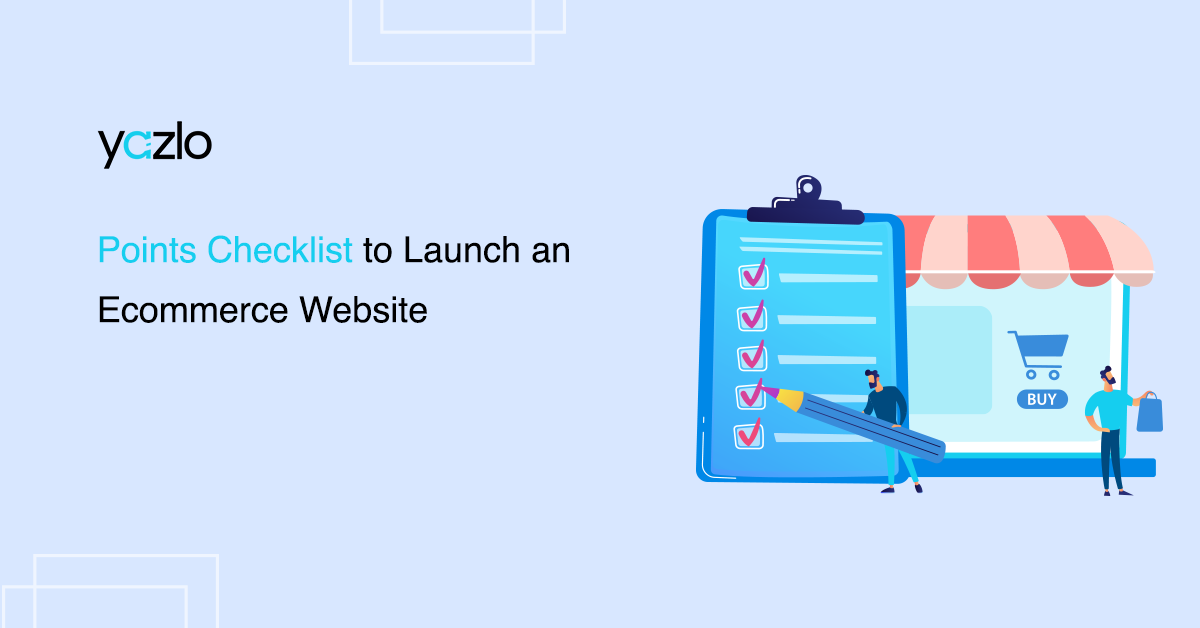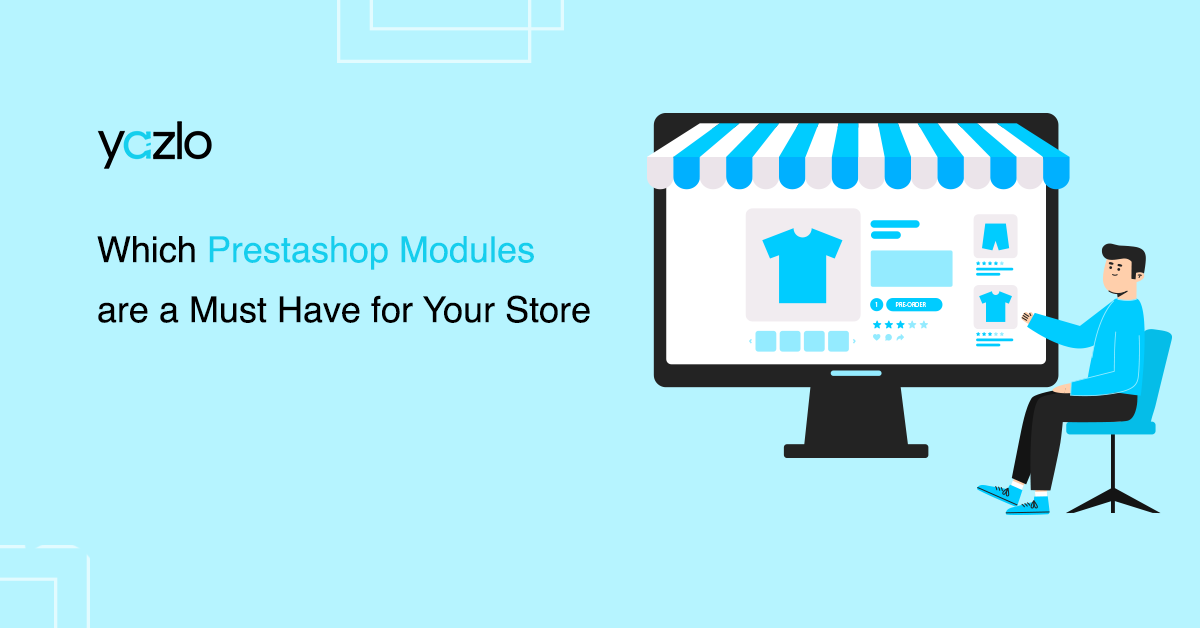There is no doubt that launching an eCommerce website is indeed a rewarding experience and offers multiple opportunities. Whether you’re looking to establish a supplementary income stream or embark on a full-fledged business venture, an eCommerce website provides the platform to do so. However, launching an eCommerce website is not easy.
There are numerous aspects you must keep in mind to ensure a successful eCommerce business. You don’t need to waste time Googling the qualities and functionality of a top-quality eCommerce website. Instead, all you need to do is follow our 11-point checklist, covering all the crucial aspects you need to consider when launching your eCommerce website.
By following the checklist, you can increase your chances of success.
Things to Consider When Launching an eCommerce Website
1. Define Your Products
The first thing that you need to do in any business is to define your niche. In other words, you need to decide which products you plan to sell. Now, there are numerous ways to determine which product will prove successful. One is to utilize market research reports. But these reports can cost thousands of dollars, meaning not everyone can afford such reports.
The second way is to research the market yourself. You can check out existing eCommerce platforms to determine which product is popular among consumers right now. You can opt to sell the same product or differentiate it by making a few changes. Regardless of the method you choose, you need to put considerable thought and effort into it. The wrong product can cost you significant losses.
You may even use a keyword planner tool to determine what people are searching for nowadays. There are several keyword planner tools, such as Google Keyword Planner and Ahrefs. These tools can point you in the right direction. You can use the information to narrow down the list to a few products. Then depending on your budget and expertise, you can select the desired product or products.
2. Define Your Target Market
After finalizing your target market, you need to define the target market. This step is very crucial. So, make sure that you conduct thorough market research to gain a deep understanding of your potential customers’ needs, preferences, and buying behavior. It will help you tailor your website and products accordingly.
3. Identify Your Unique Selling Proposition
The next step is to identify your USP. What makes your product different from others? If you cannot answer this question, then you will have a challenging time convincing your target audience to buy from your website. The USP can be anything, including superior quality or low price.
4. Choose a Reliable eCommerce Platform
This is where things can get tricky. You need to choose a reliable eCommerce platform for your website. You can opt for Shopify, Magento, WooCommerce, or others. With so many options available, selecting the right platform can be a challenge. It is why we recommend engaging a reliable eCommerce development company for this very purpose. The company will help you select the right platform based on your needs.
The alternative is to evaluate each platform’s features, pricing structure, and customer support yourself. You need to assess other factors like security, scalability, payment processors, and ease of use. Indeed, it can be quite a challenge, especially if this is your first eCommerce website. It is why it is better to engage professionals, as they can help you make the best decision.
5. Design a User-Friendly Website
The next step is to design an engaging and visually appealing website. Again, if you don’t have the skills for it, engage a web design and development company. They have the experience and expertise to create compelling websites. You may even opt for ready-made templates and customize them to your needs. Ensure your website has clear product categorization, is easy to navigate, and the checkout process is hassle-free.
Furthermore, you need to optimize the website for mobile devices as they account for the majority of website traffic today. A responsive web design will improve customer satisfaction and your bottom line. The reason is that your audience gets to enjoy a consistent and enjoyable experience across all devices. Research indicates that it can increase conversion rates.
Don’t forget to pay attention to other critical factors, especially website loading times. If your website takes longer than 3 seconds to load, then more than 50% of the visitors will already have closed your website by then. So, ensure your website loading times are minimal as possible. Lastly, implement attractive visuals and easy-to-read fonts to create an engaging experience.
6. High-Quality Product Imagery and Descriptions
Customers rely on product images, videos, and descriptions when deciding to buy a product. Therefore, ensure that each product is accompanied by high-quality visuals and descriptions. It will help the target audience understand the product better and make the purchase decision easier for them.
7. Implement Robust Security Processes
Your website must have an SSL certificate and utilize other best security practices, such as utilizing a secure hosting provider and deploying a firewall. This will instill confidence in the users as they will be confident that their information is safe and secure. After all, they will have to enter their financial information on the website. They will avoid doing so if your website lacks basic security measures.
8. Have Multiple Payment Processors
You need to have multiple payment processors to improve the customer experience. If you rely on a few payment processors, you are losing customers as no one will adopt a new payment method just for your website. Secondly, ensure that the checkout process is straightforward. It will help increase your repeat purchase rate.
9. Set Up Website Analytics
Furthermore, set up website analytics as it helps track visitors, conversion rates, bounce rate, and other website information. You can use this information to make the necessary changes. For example, a high bounce rate indicates problems with the products or even the website. You will need to identify the issue and need address it.
10. Develop an Effective Marketing Strategy
No business can grow without an effective marketing strategy. Therefore, it is vital that you develop a marketing strategy. A crucial part of this strategy will be search engine optimization (SEO). It increases organic traffic to your website by ranking it higher for relevant keywords. You will need to utilize the keyword planner tools to identify relevant keywords that align with your products.
You will then need to incorporate these keywords into your headings, URLs, website content, and other parts. It is better to engage a digital marketing agency for SEO purposes. They can help you improve your rankings in minimal time and optimize the website for a better user experience. SEO is only one aspect of marketing, meaning you need to develop other strategies.
Before moving forward, do know that SEO takes time before you can see any tangible results. Refer to ‘HOW LONG DOES SEO TAKE TO SHOW RESULTS?’ for further information about the SEO journey. For instant results, you can pair SEO with other strategies. You can use email marketing to send regular updates to your target audience and build a loyal customer base.
Furthermore, we all know how powerful a platform is on social media. So, invest in social media marketing, especially on popular platforms like TikTok and Instagram. These platforms can help you uncover customer sentiments by going through the comments. Lastly, explore Google Ads, as it is an effective way to drive targeted traffic. Use a Google AdWords Certified specialist for this purpose.
11. Test and Optimise
Lastly, test the website at all stages, especially before the launch. It will ensure a seamless customer experience. Monitor the website and analytics to identify issues or opportunities. Use the information to make the necessary changes. It is imperative that you integrate the latest technologies and trends into your website and marketing strategy to stay competitive.
Conclusion
By following this 11-point checklist, you can lay a solid foundation for your online store. Do keep in mind that setting up a successful eCommerce store takes time and effort. You must not expect overnight success. Lastly, monitor your website’s performance, stay updated with industry trends, and be responsive to customer feedback.




